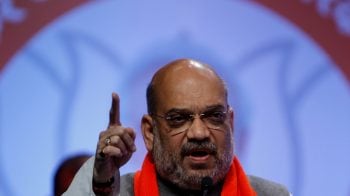In the second part of the hiring series, we look at how IT firms have been forced to tweak their overseas hiring plans.
Five years ago, one would hardly find the mention of overseas hiring in annual reports of IT companies. Now overseas hiring, especially in the US, is one of the key points of discussion for the IT majors, thanks to the tightening visa regulations.
Since 2017, the Trump administration has been tightening the H-1B visa rules, provided to skilled migrant workers. This includes rising scrutinisation of visa applied by Indian IT services firms, ban on H-4 visa that enabled spouses of H-1B visa holders to work in the US and more importance to master degree holders from the US.
IT companies were one of the biggest beneficiaries of the visa and one of the worst affected as thousands of techies returned home due to rising rejection rates of H-1B visa.
This has made the coveted H-1B visa a constant headache in more ways than one for IT majors in the country. On one-hand, these companies have to cut-back on sending Indian techies overseas and on the other-hand there is a huge demand for new-age technologies such as artificial intelligence, machine learning and cloud as new projects trickle in.
Enterprises are left with no option but to recruit overseas employees given that the US is the most important market.
Why is the US so important?
For most Indian IT companies, the US accounts for the about anywhere between 50-80 percent of their businesses. Europe, UK and others account for rest.
This translates to equivalent amount of Indian work force present in the country to handle the projects. However since 2017 the Indian overseas workforce began to come down due to visa rejections.
According to the data released by the United States Citizenship and Immigration Services (USCIS) close to 60 percent of companies that applied for a visa on behalf of foreign workers received requests for additional information in the last quarter of 2018. It was 46 percent in 2017 and 28 percent in 2016. The approval rate fell to 75 percent in the final quarter of 2018 from 83 percent in 2017 and 92 percent in 2016.
Companies with large number of rejects were Indian firms such as TCS, Infosys, and Wipro.
Apart from new applications, H-1B renewals were a challenge too. "Earlier, the Request for Evidence (RFEs), which required applicants to submit more documentation, for renewals was rare and they were hardly questioned. It is not the case anymore," said Pankai Joshi, Managing Director, NYSA Global, a firm that specialises in EB-5 migration visas.
Changing hiring pattern
Now most of the companies are rejigging their hiring pattern to factor in the visa challenges.
Yugal Joshi, Vice President, Everest Group, a management consultancy firm, said, “Most of the Indian heritage service companies are trying to hire onshore talent as much for visa as for the political climate. A lot of them never used to visit campuses or hire fresh graduates, now they are doing it. This is a significant departure in their talent strategy.”
V Apparao, Chief Human Resources Officer at HCL Technologies, during the announcement of quarter three results said that the company will continue its localisation efforts that now stand at over 65 percent from single digit over a decade ago. He also said that the company is looking to hire more people overseas in the next fiscal.
Infosys has made a commitment to hire 10,000 locals by over a two year period in 2017. TCS and Wipro too are investing significantly in this space.
Subcontract hiring
Second part of the story is increase subcontract hiring. A senior leader in a major IT company said that the company is engaging more contract hiring to fill in the talent gap in the US.
Contract hiring is the most feasible option for companies as a resource/talent with a valid visa is mapped to the project based on its requirement. Since it is fixed term, the contract ends when the project ends unlike when employees are on bench overseas, incurring unnecessary cost.
Nisha V is on overseas bench now as her project got over. “The company office is 40 miles away from where I stay. There is no point in going to office since there is no work. I’m waiting for a project to be assigned soon,” she said.
Contract hiring eliminates these issues though it comes at a cost. Kris Lakshmikanth, founder and CEO, Head Hunters India, an IT staffing firm said for most companies the margins have come down by 200 basis points as IT majors are spending more on overseas talents.
Joshi of Everest Group, said, “Increased subcontracting costs indicate they aren't hiring or don't plan or are unwilling to hire as much talent as is the demand. This talent management is a key to their business success as they don't want to build bench at onshore location.”
Umesh Belludi, Co-founder, BrainHR, a HR consultancy firm based in Bengaluru, agrees. Belludi’s firm specialises in processing H-1B for Indian IT firms and also map them to the right company. "But that business has come down by 30-35 percent since the US started imposing visa regulations," he said.
With the demand for contract hiring on the rise, his company has moved on to working with valid H-1B visa holders in the US, green card holders and citizens to match them with the right company.
A blessing in disguise
Akhilesh Tuteja, Global Co-Leader - Cyber Security at KPMG, agrees that overseas hiring comes at cost and lowers operating margin. "But these visa issues might be a blessing in disguise," he added.
Though the distance does not make client retention a huge issue, according to him proximity to clients does increase the trust factor. Salil Parekh in his recent interaction with CNBC TV-18 said that the company is staying more and more relevant to the client as it opens new offices outside India and hiring talents locally.
Infosys plans to open four technology and innovation centre in the US. Infosys also said that it will hire 1,200 people in Australia and open three offices there. HCL Technologies has opened 134 delivery centres outside India.
However this has not changed the acquisition strategy that are focused on building digital capabilities. According to a market analyst, acquisitions continue to be for capabilities and leveraging offshore factories to support onshore centric model of acquired firms be it in design, digital, or any next gen theme. "The agenda is to leverage global service delivery to scale up the capabilities of acquired firm," the analyst added.
(In the second part of the hiring series, we look at how IT firms are doing to combat the H-1B issues. First part of the series talked about how hackathons are gaining popularity to hire talent. Tomorrow, the third part of the series will look at niche skills that are in demand)






























































